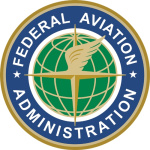- Industry: Government
- Number of terms: 35337
- Number of blossaries: 0
- Company Profile:
The British Royal Air Force flying officer who in 1929 filed a patent application for a turbojet engine. Whittle’s engine first flew in a Gloster E.28 on May 15, 1941. The first jet flight in America was made on October 2, 1942, in a Bell XP-59A that was powered by two Whittletype General Electric I-A engines.
Industry:Aviation
The central component of a reciprocating engine. This high-strength alloy steel shaft has hardened and polished bearing surfaces that ride in bearings in the crankcase. Offset throws, formed on the crankshaft, have ground and polished surfaces on which the connecting rods ride. The connecting rods change the in-and-out motion of the pistons into rotation of the crankshaft.
Industry:Aviation
The change in pressure and velocity of supersonic air as it passes over a surface that drops away from the flow. As the surface drops away, the air tries to follow it, and in changing its direction, the air speeds up to a higher supersonic speed, and its static pressure decreases. There is no change in the total amount of energy as air passes through an expansion wave.
Industry:Aviation
The characteristic of a liquid that relates to its ability to vaporize or change into a gas.
Industry:Aviation
The complete installation of an aircraft engine, propeller, and all accessories needed for its proper function.
Industry:Aviation
